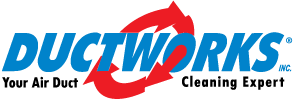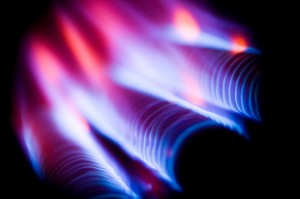100 FIVE STAR AIR DUCT CLEANING REVIEWS
 Denver, CO.— Air Duct Cleaning Industry Leader, Ductworks, Inc., achieves “100 Five Star” Air Duct Cleaning Reviews from the Customer Lobby in less than 6 months.
Denver, CO.— Air Duct Cleaning Industry Leader, Ductworks, Inc., achieves “100 Five Star” Air Duct Cleaning Reviews from the Customer Lobby in less than 6 months.
Customer Lobby is where consumers share their ratings and reviews on the local companies they hire. Company ratings are based strictly on feedback from customers of Ductworks, Inc. The Customer Lobby Five Star Grading Systems represents the level of service, level of recommendation, and total experience that Ductworks, Inc., has provided its customers.
“We are extremely proud of the reviews that we have received though Customer Lobby, the reviews are a testimony to our technician’s commitment to excellent customer service.” said Edward Frisk, Vice President of Ductworks, Inc. “For over 20 years, Ductworks, Inc. has been dedicated to offering quality air duct cleaning and world-class customer service. Customer Lobby serves as a strong resource in helping consumers better understand our overall commitment to an unparalleled air duct service.”
To view Ductworks, Inc. reviews on Customer Lobby, visit Ductworks, Inc. Customer Lobby review page
# # #
About Ductworks, Inc. – Your Air Duct Cleaning Expert
Ductworks, Inc. “Your Air Duct Cleaning Expert” is a Denver-based air duct cleaning company founded in 1990 to improve indoor air quality for homes and businesses. Their patented system of scraping and vacuuming is the most effective process for air duct cleaning. They have more technicians certified by the NADCA than any company in Colorado and provide customers with before and after photos to insure top quality performance. For more information, contact us at 303-425-0985 or ductworks.com
About Customer Lobby
Customer Lobby is the leading customer reviews solution provider focused on service businesses. Customer Lobby’s quality guarantees and dispute resolution services are unique and critical features for the 200 industries it serves. Customer Lobby’s solution enables businesses to get, manage and publish customer reviews. For more information, contact us at 866-718-9549 or www.customerlobby.com.


 What are Bed Bugs?
What are Bed Bugs? Short Cycling
Short Cycling Mold contamination within air duct systems can pose detrimental health effects to building occupants if left uncorrected. If mold exists within your air ducts make a plan to investigate the source of the problem, isolate the problem area, and remove the contaminants.
Mold contamination within air duct systems can pose detrimental health effects to building occupants if left uncorrected. If mold exists within your air ducts make a plan to investigate the source of the problem, isolate the problem area, and remove the contaminants. Air duct cleaning service providers may tell you that they need to apply a chemical biocide to the inside of your ducts to kill bacteria (germs), and fungi (mold) and prevent future biological growth. Careful consideration should be taken before allowing the application of chemicals within your air ducts. Due to the varying ranges of temperature, humidity and air turbulence there are very few chemicals that are approved for the use within ventilation systems.
Air duct cleaning service providers may tell you that they need to apply a chemical biocide to the inside of your ducts to kill bacteria (germs), and fungi (mold) and prevent future biological growth. Careful consideration should be taken before allowing the application of chemicals within your air ducts. Due to the varying ranges of temperature, humidity and air turbulence there are very few chemicals that are approved for the use within ventilation systems. Pet urine within the air ducts is an extremely unpleasant odor. Sometimes trouble shooting where the pet urine odor is coming from can be quite difficult. Here are some great instructions on how to remove pet urine odor from air ducts.
Pet urine within the air ducts is an extremely unpleasant odor. Sometimes trouble shooting where the pet urine odor is coming from can be quite difficult. Here are some great instructions on how to remove pet urine odor from air ducts. Regional climate plays a large role in Indoor Air Quality and comfort. Regional climate characteristics are determined by geographic location and long term weather conditions. Two of the most important factors that affect an areas climate are temperature and precipitation.
Regional climate plays a large role in Indoor Air Quality and comfort. Regional climate characteristics are determined by geographic location and long term weather conditions. Two of the most important factors that affect an areas climate are temperature and precipitation.